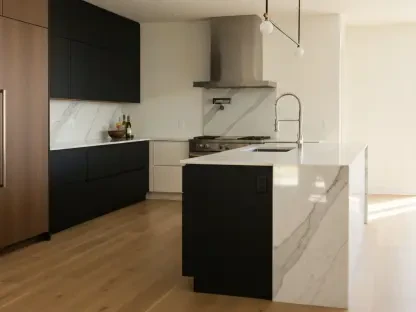In the rapidly evolving world of IoT and smart home solutions, Shelly Group has positioned itself as a leader by expanding its product portfolio with Z-Wave Long Range (ZWLR) technology. This shift addresses common challenges in smart homes, such as signal range and connectivity issues through thick walls and vast properties. With the integration of ZWLR, Shelly promises longer range, lower power consumption, and the ability to connect thousands of devices seamlessly. As consumers and integrators explore these advancements, the implications on performance, scalability, and long-term user value bring a refreshing perspective to modern living spaces.
Can you explain what led Shelly Group to expand its portfolio with Z-Wave Long Range products?
Shelly Group’s decision to integrate Z-Wave Long Range products stems from the need to address persistent challenges faced by smart home systems, particularly those related to signal interference from dense building materials, thick walls, and long distances. By expanding their portfolio, Shelly aims to provide solutions that offer greater reliability and wider coverage, enabling seamless connectivity across larger properties and diverse settings. This innovation is about enhancing user experience and further solidifying their position in the smart-building industry.
How does Z-Wave Long Range differ from traditional Z-Wave in terms of device connectivity and range?
Z-Wave Long Range significantly enhances device connectivity and network coverage compared to traditional Z-Wave. While the conventional protocol served well within smaller settings, ZWLR extends connectivity to a staggering 1.5 miles under optimal conditions. This extended range means devices can now connect from far greater distances without signal degradation, all while maintaining simple integration with existing systems.
What challenges in smart home systems does Z-Wave Long Range address, particularly regarding dense building materials and long distances?
The Z-Wave Long Range protocol targets challenges such as signal penetration through dense building materials and maintaining connectivity over long distances. These factors often result in reduced signal strength in traditional setups. With ZWLR, users can expect improved communication efficiency between devices, which is particularly useful in environments with thick walls or expansive properties that would usually hinder wireless signal transmission.
How has Shelly Group integrated Z-Wave Long Range into its existing product line?
Shelly Group has integrated Z-Wave Long Range into its product line by launching nine new devices that support the protocol. This includes variations like the Shelly Wave Plug and Shelly Wave H&T, among others. By incorporating ZWLR into their existing lineup, Shelly ensures that their products retain their signature functionality and simplicity, while offering advanced capabilities that address contemporary connectivity needs.
Could you detail the benefits of Z-Wave Long Range for consumers and integrators?
For consumers, Z-Wave Long Range offers the advantage of robust connectivity across larger areas, reducing issues related to signal loss or interference. This translates to a seamless smart home experience where devices can communicate effectively regardless of distance. Integrators benefit from the ease of installing systems over diverse environments, maximizing efficiency and reducing complexities associated with extensive network setups.
How does backward compatibility with existing Z-Wave devices work with the new Z-Wave Long Range products?
Z-Wave Long Range maintains backward compatibility, allowing the new products to interact smoothly with existing Z-Wave devices. This ensures that consumers can upgrade or integrate new products without having to overhaul their current systems, offering flexibility and continuity in their smart home setups. It enables a seamless transition, enhancing user confidence in adopting new technology.
What are some typical applications or scenarios where the extended range of Z-Wave Long Range would be most beneficial?
The extended range of Z-Wave Long Range is particularly beneficial in scenarios involving expansive properties, such as large homes, campuses, or outdoor settings with multiple buildings. It supports sophisticated setups that require extensive coverage, such as farms or estates, where traditional protocols may fall short. Furthermore, commercial environments and smart-building projects greatly benefit from the robust connectivity offered by ZWLR.
How many devices can Z-Wave Long Range support within a single network?
Z-Wave Long Range can support up to 4000 devices within a single network, an impressive capability that caters to both residential and commercial applications. This expanded capacity allows users to connect a myriad of smart devices and sensors without compromising network performance, offering scalability for complex smart home systems.
How important is low power consumption for Z-Wave Long Range, and what impact does it have on users?
Low power consumption is crucial for Z-Wave Long Range as it enhances device efficiency, prolonging battery life and reducing operational costs for users. This aspect is instrumental in maintaining sustainable and environmentally-friendly solutions, enabling users to deploy more devices without worrying about frequent energy drain or increased power expenses.
Can you elaborate on the variety of new Shelly products equipped with Z-Wave Long Range?
At launch, Shelly introduced nine new products equipped with Z-Wave Long Range, including the Shelly Wave Plug, Shelly Wave 1, and Shelly Wave Motion. Each product caters to different needs within a smart home setup, providing options for power management, temperature and humidity control, motion detection, and more. These varied offerings aim to meet user demands effectively while showcasing the versatility and power of ZWLR technology.
What Z-Wave Long Range products does Shelly plan to release later this year?
Later this year, Shelly plans to release a new batch of Z-Wave Long Range products, such as the Shelly Wave i4 and Shelly Wave Pro series. These upcoming models promise to deliver enhanced functionalities and greater integration capabilities, broadening the horizons of smart home automation and catering to increasingly sophisticated user requirements.
What is required to fully utilize long-range capabilities in Shelly’s ZWLR products?
To fully utilize the long-range capabilities of Shelly’s ZWLR products, users should pair them with a compatible ZWLR controller, like Home Assistant or Hubitat Elevation. These controllers ensure that the extended range is realized, facilitating optimal performance and seamless connectivity across the devices, thereby enhancing the overall smart home experience.
Could you discuss the compatibility of Shelly’s ZWLR products with different smart home controllers?
Shelly’s ZWLR products are designed to integrate seamlessly with popular smart home controllers such as Home Assistant and Hubitat Elevation. This compatibility ensures that users can maintain a cohesive and interconnected environment, leveraging the advanced features of the protocol without compatibility concerns.
How does Shelly Group see Z-Wave Long Range impacting the future of smart home and IoT solutions?
Shelly Group envisions Z-Wave Long Range as a catalyst for advancing smart home and IoT solutions. The enhanced range and reliability are set to redefine connectivity standards, making smart technology more accessible and efficient. Shelly expects this innovation to drive higher adoption rates and push the boundaries of what is possible in smart environments.
Are there any specific geographic areas or market segments where you anticipate heightened demand for Z-Wave Long Range products?
Heightened demand for Z-Wave Long Range products is expected in regions with sprawling landscapes, such as rural areas and large agricultural zones. Additionally, commercial sectors looking to implement comprehensive smart-building strategies will likely see increased interest, driven by the ability to cover extensive spaces without connectivity issues.
What feedback have you received from initial users or testers of these new Z-Wave Long Range products?
Initial users and testers have responded positively to the new Z-Wave Long Range products, praising their improved connectivity and ease of integration into existing systems. Feedback highlights the reliability and scope of the network, which significantly enhances the user experience across different environments.
How does the inclusion of Z-Wave Long Range in Shelly’s lineup align with the company’s long-term strategic goals?
The inclusion of Z-Wave Long Range in Shelly’s lineup underscores the company’s commitment to innovation and user-centric solutions. By expanding their offerings, Shelly aims to stay ahead in the competitive IoT market, ensuring that their products meet the evolving needs of consumers while enhancing the overall efficiency and capability of smart home systems.









